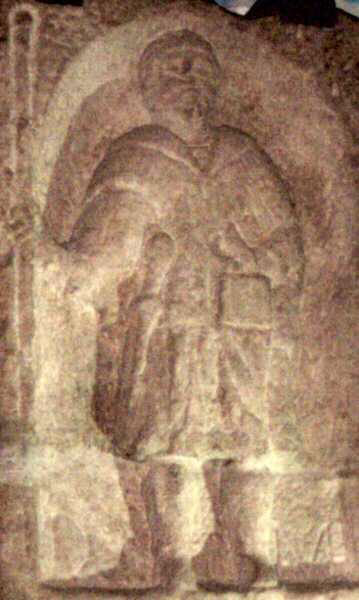| The reliability of provincial sculpture as evidence |
Crispvs(Paul Geddes)
|
 |
|
However, this is where they are generally shown being carried on funerary stelae. This gave me cause to become more wary about the position of these pugiones shown in sculpture. It is true that there are funerary sculptures which show pugiones worn at the side but rather more show them at the front, which, as already noted, is not a very practical position. A valid point can be made however, that this may be to allow the pugio to be seen more easily by the viewer. This brings me to the subject of the value of sculpture as evidence for the reality of the past. The pitfalls of using Trajan's Column and the column of Marcus Aurelius, along with various other well known pieces of urban pubic sculpture, as evidence are already well known. However, provincial sculptures and especially provincial funerary sculpture have normally been held to be more accurate, the rationale being that not only do they often seem to show details which are confirmed by archaeology, but also that the sculptors who created them were clearly not trained in the classical traditions of sculptural representation which can be clearly seen in many pieces of urban public sculpture, particularly in Rome but also to a lesser extent in Italy, Gaul, North Africa and Asia Minor, and might therefore be expected to depict what they saw rather than what they had been taught was the right way to depict a particular thing. However, whilst we can learn a great deal from provincial military sculpture and our knowledge of the Roman soldier would be so much poorer without it, is what we see always reflective of reality? What things might be the result of other factors? Looking at provincial sculpture it can quickly be seen that the sculptors did not necessarily feel the need to be totally faithful to reality. The most obvious evidence for this is that often the people shown in sculpture are very oddly proportioned, with overlarge hands, unnaturally short legs, unusually sized heads, unnaturally large waists, very big ears etc. (figs 1. & 2.). |
||
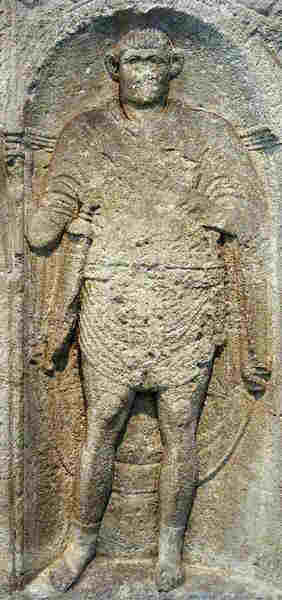 Fig 1. Petilius Secundus. |
|
|
Similarly, sword pommels are often depicted as being much larger than would be expected in reality and seem to conflict with the evidence of the length of surviving sword tangs. In addition to this, there are some indications that the sculptor has 'tidied up' the image slightly, so that, for example, we see aprons which are hanging from diagonally worn belts which are perfectly level at the bottom, so all of the apron terminals hang in perfect horizontal alignment. Such a thing would be difficult to achieve in reality so here we can see an example of a change made by the sculptor to better suit his aesthetic values (fig. 3). |
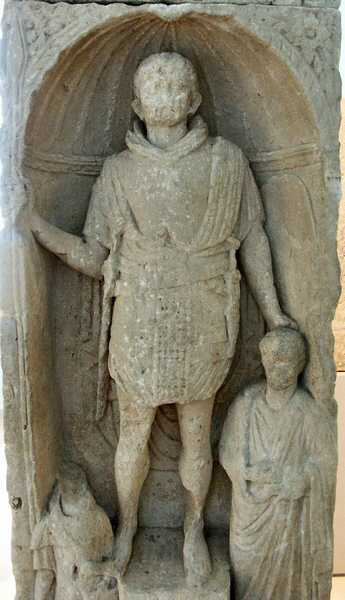 Fig. 3. Detail of Firmus’ belt arrangement. |
||
|
Similarly, we can sometimes see examples
of simplification, where achieving realistic detail was beyond
the sculptor's capability. Perhaps the clearest examples of this
simplification are in the depiction of belt plates and pugio sheaths.
In the case of type 'B' belt plates decorated with concentric
circles the detail is normally well produced, but in the cases
of type 'B' plates with more complex designs and type 'A' plates,
which normally feature intricate abstract designs, this level
of detail is difficult if not impossible to reproduce in stone.
Therefore, simplified designs are often featured on sculpture
which are not reflected in the evidence of the archaeological
record but can be understood as an achievable representation of
something which cannot be accurately represented in stone. The
same applies to the decoration shown on dagger sheaths: the decoration
found on the actual pieces is similarly complex and cannot easily
be achieved in stone. Like belt plate decoration therefore, this
decoration is normally either simplified or omitted so that sometimes
they appear superficially similar to the designs apparently shown
on belt plates (fig. 4). |
||
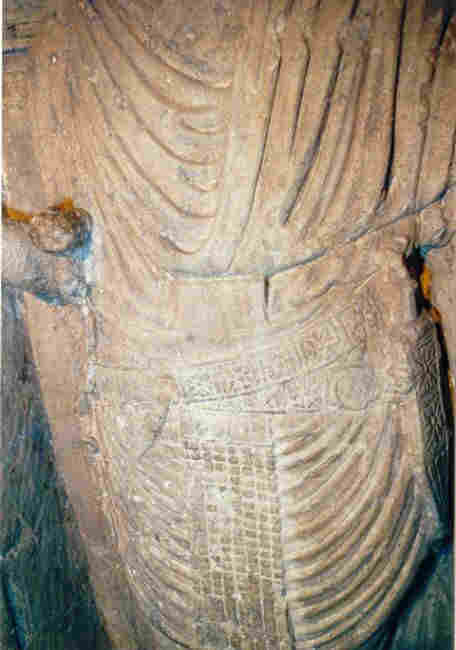 Fig 4. Detail of Annaius Daverzus’ pugio and belts. |
||
|
Attempts to compare the two from sculpture are
misguided though, as, according to a wealth of archaeological
evidence, what would be compared is extreme simplification of
the reality, not the reality itself. Any advantage which the original
painted surfaces would have given ancient viewers is lost to us.
|
||
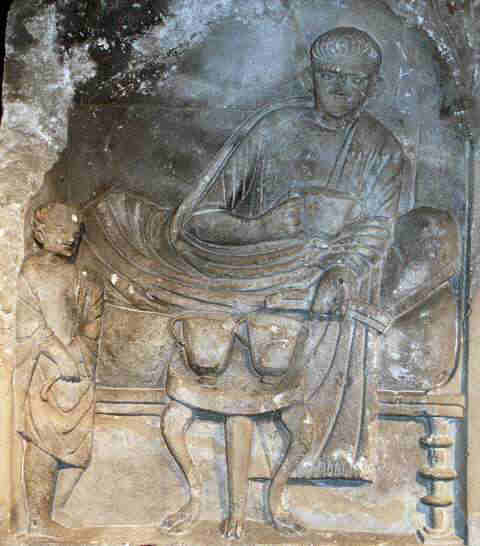 Fig. 4: Caius Iulius Baccus.
|
||
|
(All photographs used have been taken from the Romanarmy.com imagebase) |
||
